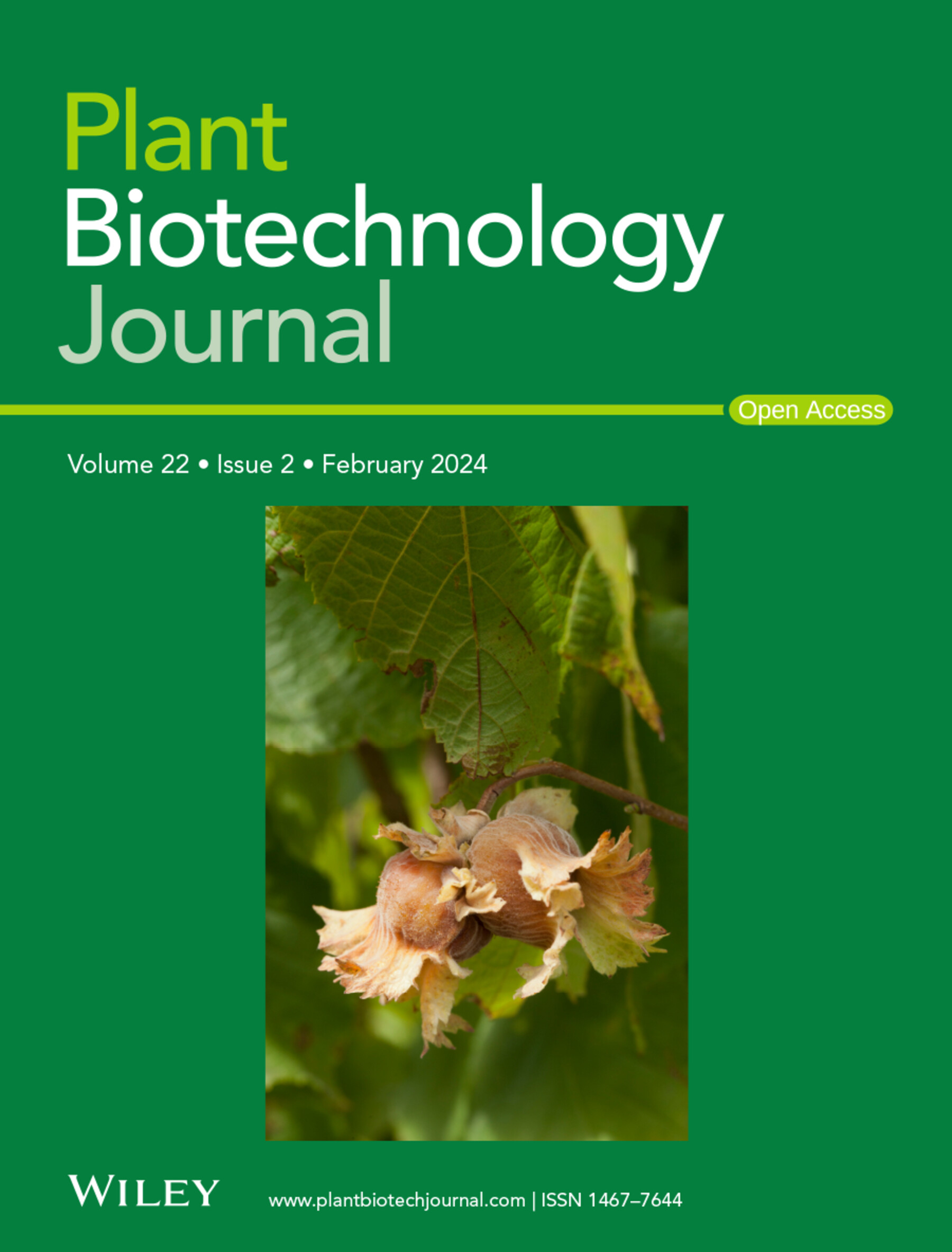Modulation of lignin and anthocyanin homeostasis by GTP cyclohydrolase1 in maize
IF 10.1
1区 生物学
Q1 BIOTECHNOLOGY & APPLIED MICROBIOLOGY
引用次数: 0
Abstract
Maize is a key biomass resource with wide agricultural applications. Anthocyanins, potent antioxidants, offer health benefits like reducing oxidative stress. The biosynthesis of anthocyanins competes with that of lignin for shared metabolic precursors, which can lead to trade-offs in plant growth and feed quality. Higher lignin content can decrease silage digestibility, posing challenges for livestock feed. The maize brown midrib 6 (bm6) mutant, known for reduced lignin, has an unclear genetic basis. Here, we identify ZmGCH1 as the candidate gene for bm6 through fine mapping. Mutations in ZmGCH1 shift precursors from lignin to anthocyanin biosynthesis. Furthermore, we show that ZmGCH1 interacts with ZmPEBP15 to modulate chalcone synthase activity, thereby stabilizing the allocation of precursors between lignin and anthocyanin pathways. To evaluate the practical implications of our findings, we introduced the bm6 mutation into Zhengdan958 and Xianyu335. In vitro rumen digestion assays confirmed that the introduction of the bm6 mutation significantly improved silage digestibility. This discovery not only holds great potential for enhancing silage digestibility but also provides a broader strategy for optimizing maize production to better meet the increasing demands of both the food and livestock feed.求助全文
约1分钟内获得全文
求助全文
来源期刊

Plant Biotechnology Journal
生物-生物工程与应用微生物
CiteScore
20.50
自引率
2.90%
发文量
201
审稿时长
1 months
期刊介绍:
Plant Biotechnology Journal aspires to publish original research and insightful reviews of high impact, authored by prominent researchers in applied plant science. The journal places a special emphasis on molecular plant sciences and their practical applications through plant biotechnology. Our goal is to establish a platform for showcasing significant advances in the field, encompassing curiosity-driven studies with potential applications, strategic research in plant biotechnology, scientific analysis of crucial issues for the beneficial utilization of plant sciences, and assessments of the performance of plant biotechnology products in practical applications.
 求助内容:
求助内容: 应助结果提醒方式:
应助结果提醒方式:


